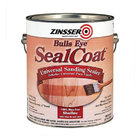I see so many types, but which one? Bulls Eye has two versions - one called "wax free shellac" sanding sealer ($20). Another called "wax free formula" sanding sealer ($30). And many others like Waterlox, but little on comparisons between all these. What are their characteristics and applications, besides the obvious?
I have a red cedar serving platter I'm finishing. Wondering which sealer I should try, as I've not used sealers in the past. Thanks for the help all!
I have a red cedar serving platter I'm finishing. Wondering which sealer I should try, as I've not used sealers in the past. Thanks for the help all!

